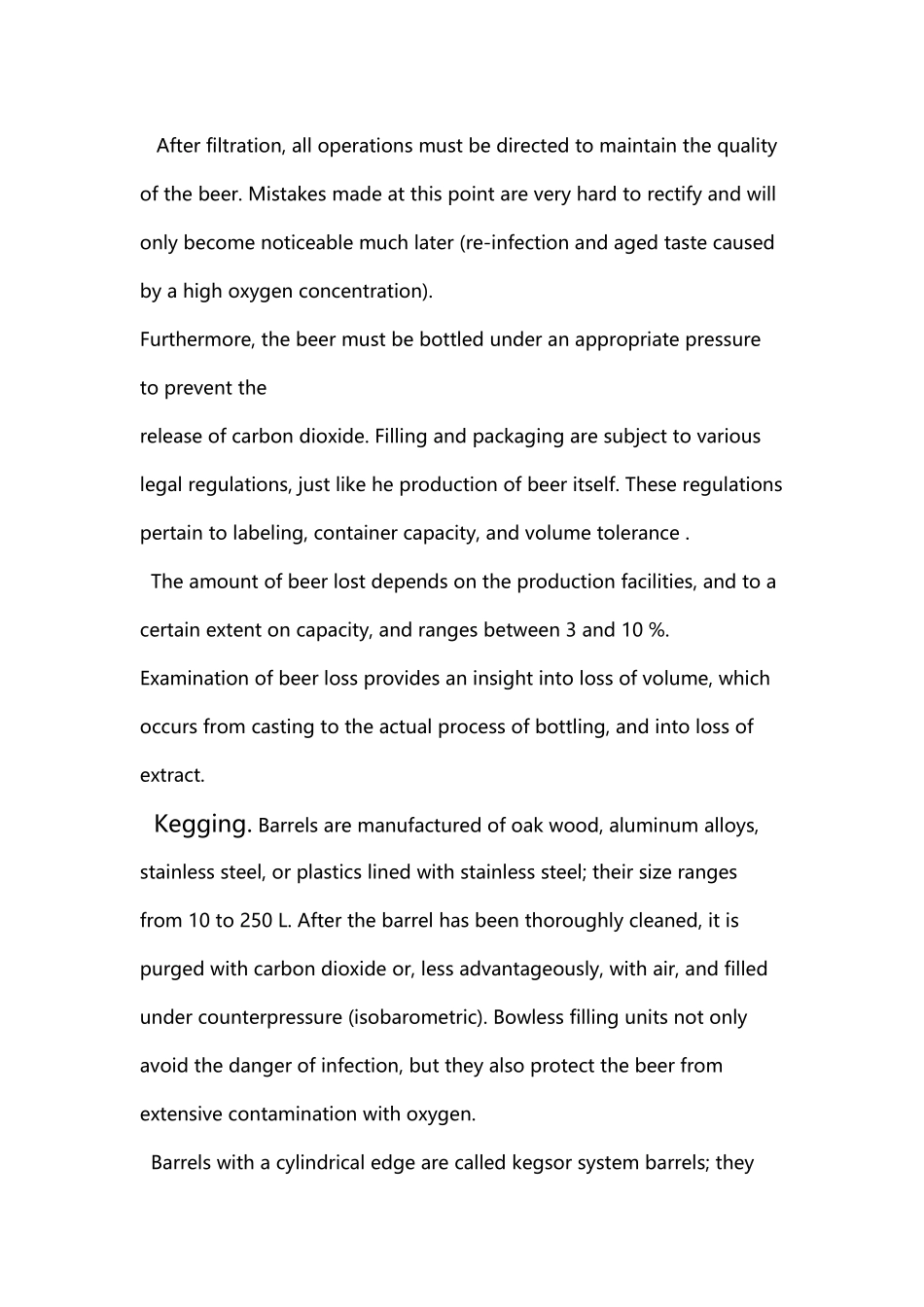啤酒设计外文参考文献翻译(4 页)Good is good, but better carries it.精益求精,善益求善。 英文参考文献翻译二零一五年五月 摘自 Ullmann's Encyclopedia of Industrial Chemistry Published Online: 15 APR 2025 DOI: 10.1002/14356007.a03_421.pub2 英文原文: Filling After filtration, all operations must be directed to maintain the quality of the beer. Mistakes made at this point are very hard to rectify and will only become noticeable much later (re-infection and aged taste caused by a high oxygen concentration).Furthermore, the beer must be bottled under an appropriate pressure to prevent therelease of carbon dioxide. Filling and packaging are subject to various legal regulations, just like he production of beer itself. These regulations pertain to labeling, container capacity, and volume tolerance . The amount of beer lost depends on the production facilities, and to a certain extent on capacity, and ranges between 3 and 10 %. Examination of beer loss provides an insight into loss of volume, which occurs from casting to the actual process of bottling, and into loss of extract. Kegging. Barrels are manufactured of oak wood, aluminum alloys, stainless steel, or plastics lined with stainless steel; their size ranges from 10 to 250 L. After the barrel has been thoroughly cleaned, it is purged with carbon dioxide or, less advantageously, with air, and filled under counterpressure (isobarometric). Bowless filling units not only avoid the danger of infection, but they also protect the beer fromextensive contamination with oxygen. Barrels with a cylindrical edge are called kegsor system barrels; they have a permanently installed fitting for cleaning, sterilization, filling, and tapping. With such a device, the barrel remains sealed...


